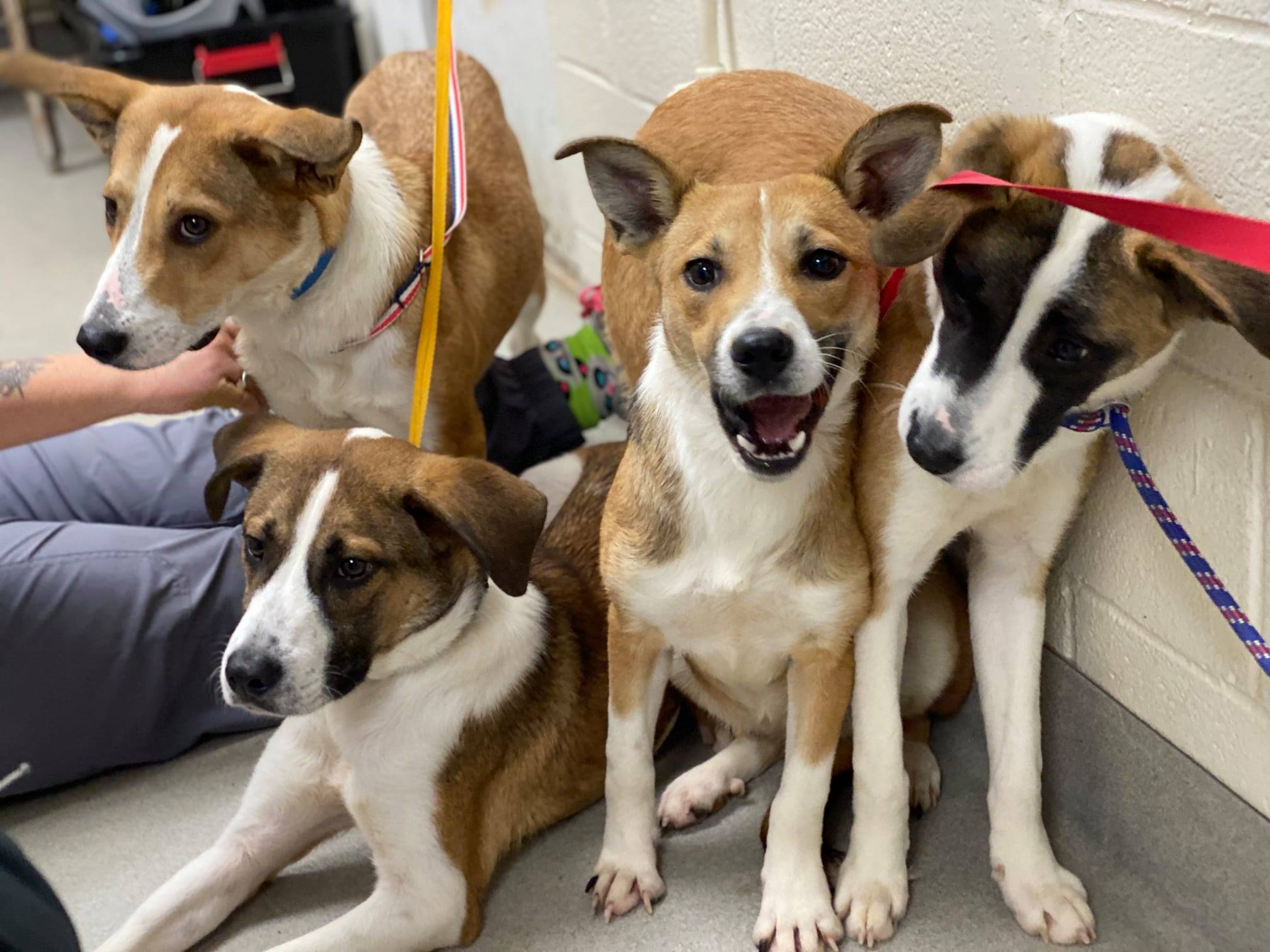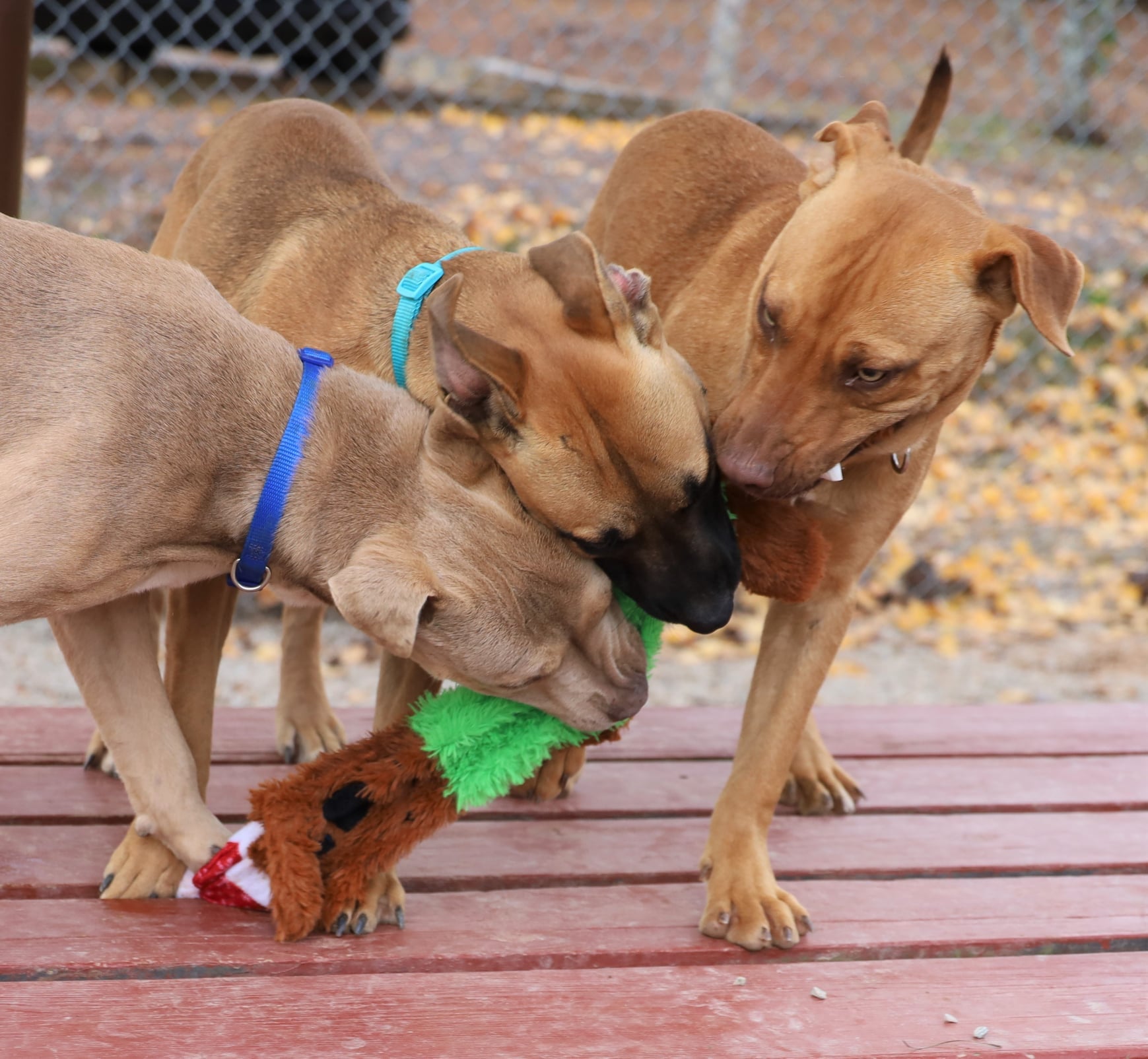Georgia’s ongoing crisis of dog and cat overpopulation has led to escalating rates of shelter intake and euthanasia of adoptable animals. In 2024, 96,000 dogs were impounded at municipal shelters in Georgia. Of these, 22,000 dogs were euthanized or otherwise died there—twice as many as in 2021. The state’s live release rate dropped to 76.3%, far below the “no kill” benchmark of 90%.

Consequences of
Shelter Overcrowding
Georgia’s shelter data, however, is undercounting the total number of homeless and unwanted dogs and cats. Because of shelter overcrowding, intact homeless animals are being left on the streets to reproduce unchecked. Additionally, many rural counties do not have municipal shelters or have shelters with limited operations (i.e., quarantine facilities). Roaming animals compound pet overpopulation and become public safety and health hazards while suffering and dying in the field.
Georgia’s dire profile reflects a national backlog of spay/neuter surgeries initially triggered by the Covid-19 shutdown of nonessential services; in fact, there is an estimated backlog nationally of 2.7 million spay/neuter surgeries, not counting roaming animals, since 2020. The deficit in surgeries is projected to have significantly risen since then.

Lack Of
Veterinary Infrastructure
A critical lack of veterinary infrastructure in the more rural areas of Georgia has exacerbated this problem further.
Twenty-eight counties have no veterinary professionals whatsoever and approximately 50% of all counties are in the bottom quarter of the country for access to veterinary care. Only six states have worse access to veterinary care than Georgia.
The national veterinary workforce shortage has impacted the public and nonprofit sectors especially hard and resulted in excessive wait times for spay/neuter surgeries (as much as 2 months or more). A 2024 national survey of animal shelters and nonprofit veterinary clinics found that approximately 75% were short-staffed for veterinarians, resulting in a significant backlog of spay/neuter surgeries and basic preventive healthcare.
Animals often become pregnant during the wait period, further contributing to pet overpopulation, and increasing the financial burden on taxpayers and charitable donors.

Effective Use of
Spay/Neuter Programs
Research has shown that the intensity of spay/neuter efforts is a key factor in reversing population growth; that quickly reaching a 75% sterilization rate in inadvertent-breeding populations is needed to mitigate overproduction.
The alteration rate of pets in our most underserved communities is typically 25% or less.
In particular, younger female dogs and cats and younger medium/large breed male dogs should receive top priority for targeted spay/neuter programs.
Funding through public/private partnerships is urgently needed to expand access to low cost spay/neuter in underserved areas of Georgia. Working with United Spay Alliance, nonprofit organizations, and local governments throughout Georgia, we work with stakeholders to organize and hold trainings and spayathons.
Get in Contact
to learn more about our spay and neuter clinics.
